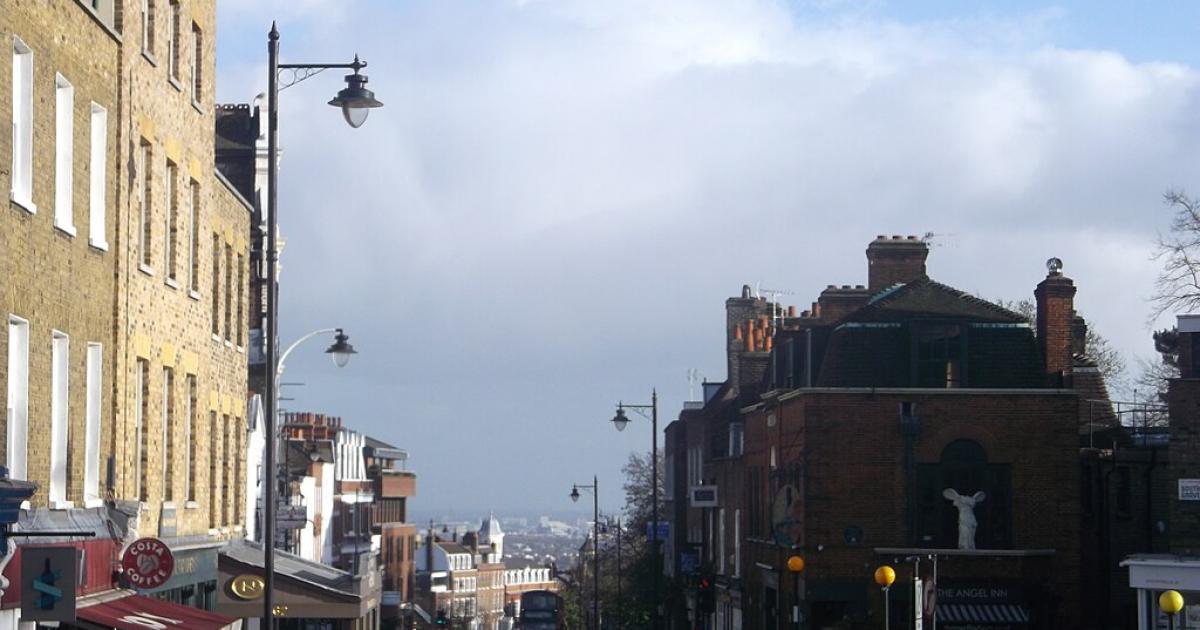Marked on the late medieval Gough Map, the road went from London to Carlisle with a branch to Chester and North Wales.
In London, it ran from the City up Holloway Road and Highgate Hill, and from there across Finchley Common to (High) Barnet and so to St Albans.
Medieval travellers along this road ranged from solitary messengers to the large armies fighting the Wars of the Roses: at Barnet in 1470, Edward IV crushed Warwick, the Kingmaker; a little further north, St Albans was the site of two battles.
Fortunately, the steep gradient of Highgate Hill saved this ancient road’s buildings.
Archway bridge was built in 1900 (Image: Newsquest) In 1810, a new road further east was tunnelled through the hill. The tunnel collapsed and was replaced by a bridge, which was in turn replaced by the present Archway Bridge in 1900.
Our walk starts at Highgate Station on the ‘new’ Archway Road.
Cross its junction with Southwood Lane and turn into the Park, lined with Victorian villas and the tree-lined grounds of Park House, now Hillcrest flats, dating from the 1940s. At the end, Park House Passage leads onto North Hill.
Turn left to begin your journey along the Great North Road.
North Hill is wide and busy with traffic, but the compensation lies in its buildings, ribbon development along it, with some grand buildings, mostly from the 18th and 19th centuries.
By Park House Passage sits a grand stuccoed house with a round Tuscan pediment.
The Bull is essentially 18th century (Image: Google Maps)
Almost opposite is the Bull, a roadside inn, essentially 18th century, though modernised around 1900.
Amidst the older housing come Highpoint One and Two, Grade I-listed flats by Lubetkin and Tecton from the 1930s. They are excellent examples of early International Style architecture and were highly praised by Le Corbusier.
David Harrison has been looking at the history of Highgate while on a walk (Image: Footways.London) Nearer to Highgate High Street are several delightful 18th and early 19th-century buildings, including numbers 37 and 43 with giant pilasters.
The Sycamores, which may have been a pub in the 18th century, has a large doorway with a curved pediment. Next is the lovely 17th-century Byron Cottage with brick gables.
At the south end is Highgate School, founded as a grammar school in 1565, though its present buildings are Victorian.
The Gatehouse is said to be on the site of a 14th century toll gate (Image: PA)
Near the school is the Gatehouse, a 20th century half-timbered pub, which is said to be on the site of the toll gate where, in the 14th Century, the Bishop of London took tolls from travellers using the road he had created across his park.
Once in Highgate High Street, the scene is agreeably unspoilt with 17th to 19th century buildings and Victorian shop fronts giving an impression of Highgate as a small town.
Wandering south down Highgate Hill, find more rewards, notably the red brick Cromwell House of 1637-8. It is in the artisan style and has been described as a ‘tour de force on the part of some bricklayer contractor’.
Lauderdale House was originally built as a timber frame house in 1582 (Image: Newsquest)
Opposite is the even older Lauderdale House, which was constructed as a timber-framed house in 1582, although its facades have changed and the timber has been rendered over.
Further down is Whittington Hospital, the oldest parts built in an Italianate style dating from 1848.
The walk ends at the new part-pedestrianised Navigator Square and Archway station, passing on the way the Whittington Stone, erected in 1821 to commemorate the spot where Dick Whittington (1354–1423) is supposed to have turned back to London to earn a fortune and become Lord Mayor. The cat was added in 1964.
The cat on the Whittington Stone was a later addition (Image: Govert2026. CC 4.0)
While a Sir Richard Whittington was Lord Mayor, the story of Dick Whittington’s cat and Highgate Hill is a myth.
But it is true that by the 14th Century, Highgate Hill was historically the main road to the northwest.
In 1380, the inhabitants of Islington and St Pancras were granted the right to take tolls for its repair, and in the 1460s, the road was maintained by hermits who had a hermitage in Highgate.
Medieval roads have a fascinating story to tell.
A map has been created showing roads from the Late Middle Ages (Image: David Harrison) Find out more about them in a newly published ‘Road Map of England and Wales in the Late Middle Ages’.
